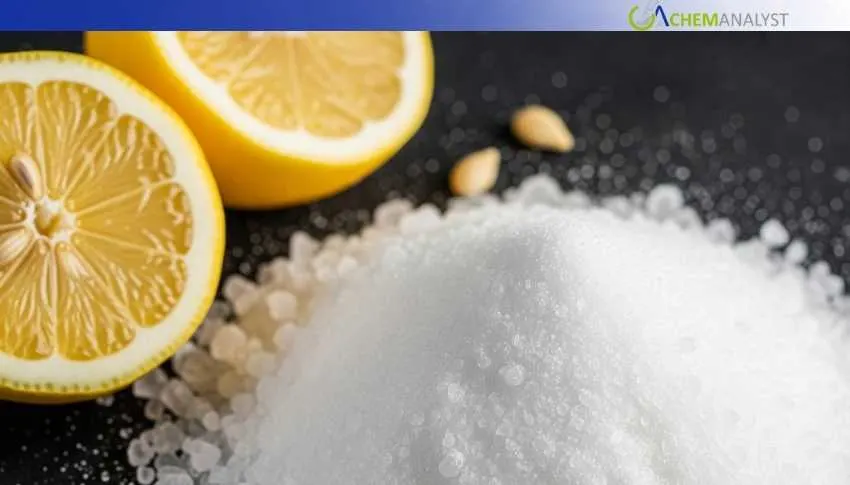Welcome To ChemAnalyst

Citric acid markets faced heavy pressure in August 2025, driven by oversupply, weak downstream demand, and fading tariff-related stockpiling. Despite its wide applications in food, pharma, cosmetics, and cleaning, prices fell sharply as Chinese producers, holding 70% of global capacity, expanded output while U.S. pre-tariff hoarding left warehouses overstocked. With logistics easing and corn feedstock costs low, supply surged further. Demand across industries stayed cautious, pointing to continued bearish pricing through Q4 2025 unless capacity cuts or demand recovery shift fundamentals.
The markets of Citric acid have experienced significant pressure due to market dynamics observed in August 2025 in the form of a perfect storm overload of the supply, uncertainty of trade, and decreased demand in the downstream market. The most common acidity regulator in food production has been in a steep price decline as strategic hoarding measures over months in anticipation of U.S. tariff applications have run their course.
Citric acid has a diverse range of applications as the backbone regulation of acidity in food production, drug excipients, cosmetics and the cleaning industry. China holds about 70 percent of the world capacity to produce this essential chemical compound, and thus triggers billions of dollars of trade every year. The current market disruption signals significant shifts for industries dependent on citric acid sourcing strategies, forcing procurement teams to reassess supply chain resilience and pricing models.
In June through August 2025, Chinese citric acid producers lowered their offers to the point that July average prices were much lower than before. August was no exception to this bearish trend with larger producers such as BBCA and Arshine pushing more capacity production into the markets. The downward spiral gained steam even though citric acid was not targeted directly by Section 232 actions that penalised related acidulants such as acetic and tartaric acid at rates of up to 145%. Market fundamentals indicate that citric acid continues to face oversupply conditions into Q3 as the level of inventory holding in commercial distributors is high.
Supply chain disruptions initially expected to constrain citric acid availability instead contributed to market saturation. The pre-tariff stockpiling by the U.S. importers triggered a surge demand in June and July as customers rushed to get their front-loaded purchases even though China had a relatively low 3-percent share of American citric acid imports. This propensity to purchase strategically turned disastrous with the result of excess stocks in the warehouse which in turn removed the urgency to purchase. The availability of the containers also improved at the same time, eliminating the logistics constraints that were used as citric acid pricing support. In Qingdao and Dalian, operations of ports were considerably efficient, and domestic allocation flowed freely with no artificial pressures on the price.
Downstream industries utilizing citric acid now benefit from lower input costs but face demand uncertainty. Food and drinks manufacturers tightened up inventories as consumer spending was sluggish, whereas most pharmaceutical firms continued to purchase conservatively through citric acid-treated excipients. There were muted buying behaviours in the industrial cleaning industry due to the slowing of economies that led to reduced growth initiatives necessitating citric acid formulations. Abundant domestic corn supplies in China further pressured production costs, as maize feedstock prices remained subdued throughout the key growing season.
Citric acid pricing outlook suggests continued pressure through Q4 2025 as overcapacity conditions persist, and global trade tensions maintain buyer caution. Capacity de-leveraging or revival of demand could bring relief, although present fundamentals are encouraging a prolonged price-weakness. Buyers are advised to take advantage of cheap citric acid procurement terms as they keep track of the geopolitical events that may redefine the flow of the acidulants.
We use cookies to deliver the best possible experience on our website. To learn more, visit our Privacy Policy. By continuing to use this site or by closing this box, you consent to our use of cookies. More info.
